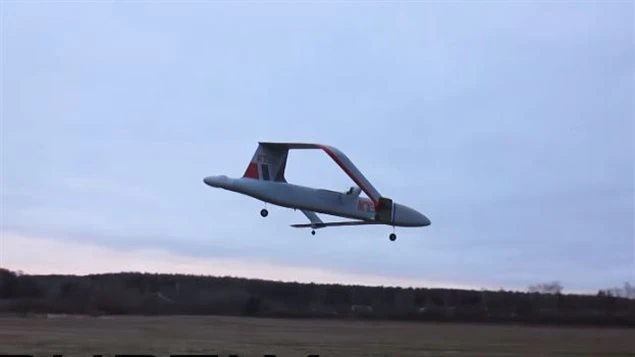After the expansion of the NATO bloc, the composition of the Baltic Fleet of the Russian Federation will have to be revised
The entry into the NATO bloc of Sweden and Finland is a big problem for the RF Ministry of Defense. Soon, both shores of the Baltic Sea will legally become part of the North Atlantic Alliance, finally turning it into "NATO's inland sea." At the same time, the danger for the Russian exclave of the Kaliningrad region is increasing, and the question of the future prospects of the Russian Baltic Fleet is also sharply raised. Is it needed now at all, and if so, in what composition?
In the Soviet period, when the Baltics were part of the USSR, and our country had allies in Europe under the Warsaw Pact, the significance of the Baltic Fleet was completely different than it is now. In the event of the outbreak of hostilities against the North Atlantic Alliance, the Baltics had to restrain the activity of the NATO fleet and support the offensive of the Group of Soviet Forces in Germany on the territory of the Federal Republic of Germany. From the air, the ships would be covered by aircraft stationed, including in the friendly GDR.
Unfortunately, after the collapse of the USSR, everything changed dramatically for the worse. The Russian Federation no longer has any allies in the western direction, except for Belarus. The Kaliningrad region turned out to be cut off from the main territory of the country by the hostile Baltic states. Lithuania and Poland, surrounding it, joined the North Atlantic Alliance. The size of the Baltic Fleet of the Russian Federation, stationed in Baltiysk, has decreased and is many times inferior to a potential enemy. The RF Ministry of Defense does not seem to be planning large-scale offensive measures deep into Europe, and there is nothing corny about it. The following figures can testify to how unequal the forces of Russia and the NATO bloc in the Baltic are.
Thus, the German Navy has 11 frigates, 5 corvettes, 19 minesweepers, 2 landing ships and 6 submarines, as well as a number of auxiliary ships. The Polish Navy has 2 frigates, 2 corvettes, 3 missile boats, 3 submarines (2 in service) and 1 minesweeper. Latvia has 8 patrol ships, 4 minesweepers and 6 patrol boats in the Baltic. The Lithuanian Navy has 4 patrol ships, 1 control ship and 2 minesweepers, the Estonian Navy has 2 coast guard ships and 3 minesweepers. The Norwegian Navy consists of 4 frigates, 6 corvettes, 6 minesweepers and 6 submarines. Denmark has 4 ocean patrol ships and 3 frigates, as well as 2 control ships.
And this is just what the NATO bloc has in the Baltic here and now, not counting the fleets of other allies, against 1 of our old destroyer of the Sarych type, which is under repair, the patrol ship Yaroslav the Wise (its brother in the Neustrashimy project) also under repair), 4 Guardian-type corvettes, 15 small missile and anti-submarine ships, 4 large landing craft, 2 small landing ships, 9 landing craft, 11 combat boats and 1 submarine.
Soon, the North Atlantic Alliance will be officially reinforced with 8 Finnish patrol ships, 6 minelayers, 13 minesweepers and 2 landing craft, as well as 11 Swedish corvettes, 7 minesweepers, 12 patrol boats and 5 submarines.The advantage in strength is total.
Let us note the fact that all our potential adversaries in the Baltic Sea obviously relied on its mining in order to block the ships of the Baltic Fleet of the Russian Federation, judging by the number of NATO minelayers and minesweepers. What worked in previous World Wars will work now. If desired, the North Atlantic Alliance can block our exit from the ports of the Kaliningrad region and the Gulf of Finland for St. Petersburg. What is even worse, the entire Baltic Sea is being shot through by anti-ship missiles of the DBK and aircraft with air-based anti-ship missiles. Soon both Baltic coasts will be under NATO control. But even in the port it is not a fact that it will be safe to sit out, since Russian ships can be covered right at the pier with long-range artillery from the territory of Poland.
In general, all this has been known for a long time. But the lessons of confrontation in the Black Sea simply force us to re-evaluate potential threats. The Baltic Fleet of the Russian Federation is objectively now in a death trap, and the question is what to do with it now.
Try to strengthen it in order to create a semblance of parity with the combined forces of NATO? It's just unrealistic and doesn't make any practical sense. Whatever you do, the enemy will still dominate the region both at sea and in the air. How ingloriously Russian warships and boats are sinking, we have already seen enough, that's enough. Completely withdraw the Baltic Fleet somewhere to a safer place? Also not an option, since such a unilateral demilitarization of the water area by Russia will be unequivocally perceived by a potential adversary as an image victory. And where are these safe places these days?
All that remains is to reconsider the composition of the Baltic Fleet and set real tasks for it. It is probably worth leaving mainly small missile ships and other Caliber carriers in the Baltic as a means of deterring the NATO bloc. In the event of the outbreak of hostilities, cruise missiles will definitely not be superfluous, allowing them to deliver pinpoint strikes against enemy military infrastructure. On the Black Sea, everyone saw that our fleet is good at doing this.
Do we now need frigate or corvette-class ships on NATO's "inland sea"? No, they have nothing to do there, they should be transferred to other Russian fleets. For example, a couple of project 20380 corvettes would now be very useful in the Black Sea in the confrontation with the Armed Forces of Ukraine and the Ukrainian Navy for Zmeiny Island, which we eventually had to give up. But so far the Turkish straits are closed, they realized it too late. Perhaps even more needed are PLO corvettes, patrol and landing ships as part of the Pacific Fleet, which has long been in dire need of reinforcement.
It is already obvious that the composition of the Baltic Fleet of the Russian Federation must be reshuffled, taking into account the new geopolitical reality.
https://topcor-ru.translate.goog/26596-posle-rasshirenija-bloka-nato-sostav-baltijskogo-flota-rf-pridetsja-peresmotret.html?utm_source=warfiles.ru&_x_tr_sl=auto&_x_tr_tl=en&_x_tr_hl=en








